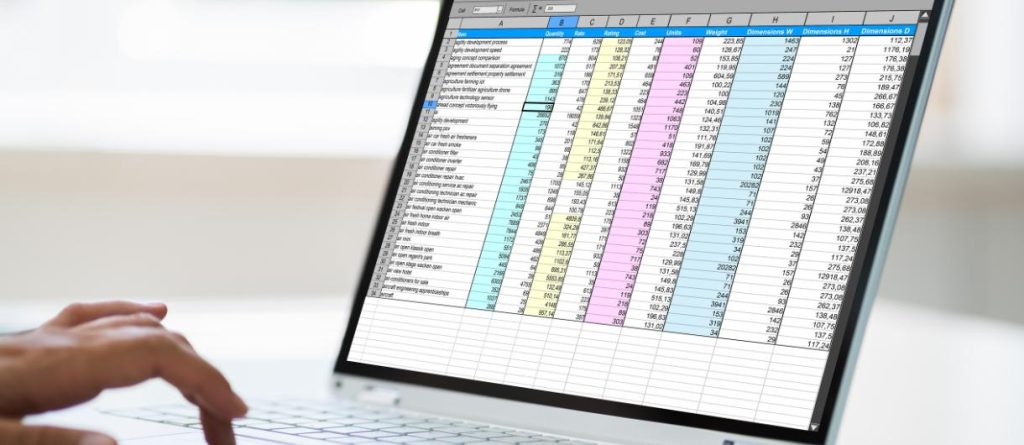Spreadsheets have been the go-to tool for managing OT assets for as long as anyone can remember. They’re cheap, familiar, and seem to get the job done… for a while. However, they’re no longer good enough.
Spreadsheets are inefficient, error-prone, and leave your critical systems exposed. In today’s fast-paced OT environment, the risks of sticking with spreadsheets far outweigh the comfort of using what you know.
This blog uncovers what’s lurking beneath the surface and why it’s time to replace spreadsheets with a smarter, more robust solution for asset management.
Why Spreadsheets Still Dominate OT Asset Tracking
So, why are spreadsheets still so widely used for OT asset management? Simple.
- They’re cheap, accessible, and easy to use.
- Most teams are already familiar with them.
- They seem like a quick fix until they’re not.
Spreadsheets weren’t built for OT. In many environments, specialized tools still aren’t in place, so spreadsheets become the default tool for short-term needs. But in OT, that “short-term” solution often becomes a long-term problem.
The Risks of Relying on Spreadsheets
Now, let’s discuss the hidden dangers of relying on spreadsheets to manage your OT assets.
- Inaccuracy Over Time
We’ve all been there: human error creeps in. One wrong entry, an outdated file version, or even a duplicated asset can throw everything off. Over time, these small errors snowball. And when it comes to OT, those small errors can lead to huge consequences. Inaccurate asset data is a ticking time bomb.
- Limited Operational Awareness
Spreadsheets give you a snapshot often outdated and disconnected from what’s actually happening on the ground. In OT environments where assets evolve across configurations, firmware, and usage status, static documents can’t keep pace.
You might know what assets you own but not where they sit in the operational hierarchy, how they’re configured, or whether they’ve changed since the last update. This disconnect from day-to-day operational shifts makes it harder to track readiness, identify potential threats, or prepare for audits.
- Fragmentation Across Teams or Sites
Here’s where things go sideways. Multiple departments, multiple sites, multiple versions of the same spreadsheet. Each one is filled with conflicting, incomplete, and inconsistent data. This fragmentation means teams aren’t working from the same page, leading to confusion, inefficiency, and risk.
- Lack of Contextual Data
Another drawback is that spreadsheets are great at holding numbers but don’t capture the context around those numbers. Where’s the configuration mapping? Firmware versioning? Lifecycle tracking? Without these crucial data points, you’re missing the full picture and exposing your systems to unnecessary risk.
- Audit and Compliance Gaps
Think about it: how easy is it to prove your assets comply with frameworks like ISA/IEC 62443, NCA OTCC or even a Cyber PHA when all you’ve got is a spreadsheet?
If you can’t quickly generate audit-ready documentation or track changes across the board, you’re putting your organization in jeopardy of non-compliance. In OT, failure costs are too high to risk leaving compliance to chance.
It’s Time to Move On
Here’s how you know it’s time to ditch the spreadsheets for good:
- Your asset list is a mess. You spend more time chasing stakeholders for updates than managing your assets.
- Compliance audits are a nightmare. They require weeks of manual prep work just to get your ducks in a row.
- You’ve had incidents due to outdated or undocumented assets. A system failure or a security breach because of an asset you didn’t know existed or hadn’t tracked properly? Not good.
- Asset data is inconsistent across systems or sites. Multiple versions of spreadsheets mean there’s no single source of truth.
You can’t trust what you’re working with, so the next best thing is to move to modern asset management solutions.
What a Modern Solution Looks Like
As mentioned earlier, spreadsheets can’t scale with your OT needs. But a modern solution can. Imagine a system that:
- Centralizes your asset inventory with up-to-date, and accurate data.
- Offers customizable fields that allow you to track assets across physical, logical, and organizational hierarchies.
- Tracks lifecycle data, firmware versions, and configurations so you know exactly where each asset stands at any given time.
- Delivers audit-ready documentation and change logs that make compliance a breeze.
- Becomes the single source of truth, ensuring that every team, every site, and every asset is on the same page.
That’s what a smart, scalable OT asset management system should do.
Take Control of Your OT Assets Today
Are you ready to ditch spreadsheet inefficiencies and embrace a more secure, streamlined approach to managing OT assets? With OTNexus, you can improve decision-making, enhance security, and ensure compliance while reducing the burden of manual processes.
Request a Vulnerability Assessment today. Let OTNexus show you what your spreadsheets are missing and build a clear path to a secure, unified OT asset management strategy.
Book your assessment now before the next incident does it for you.





